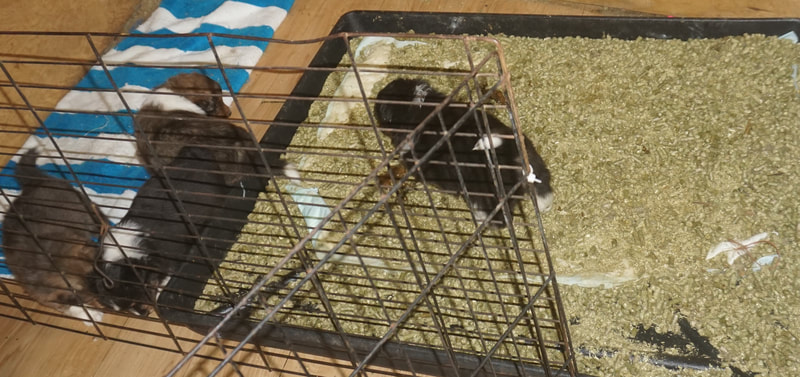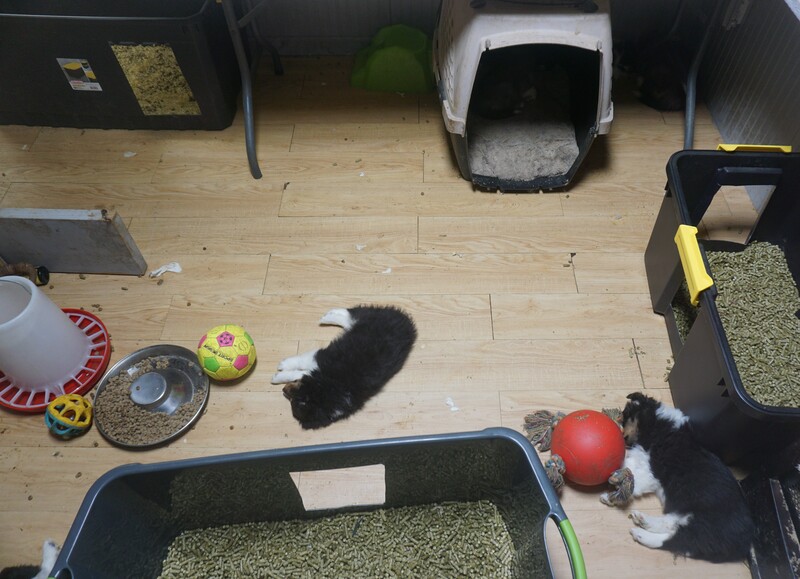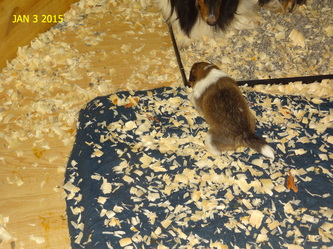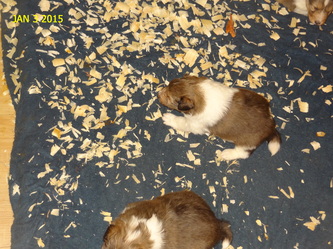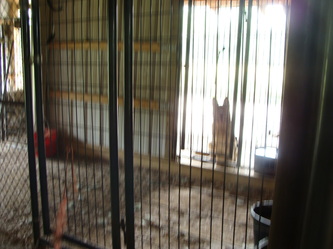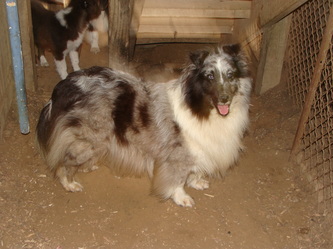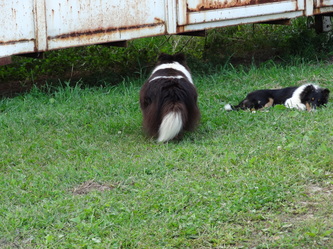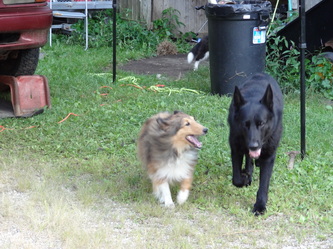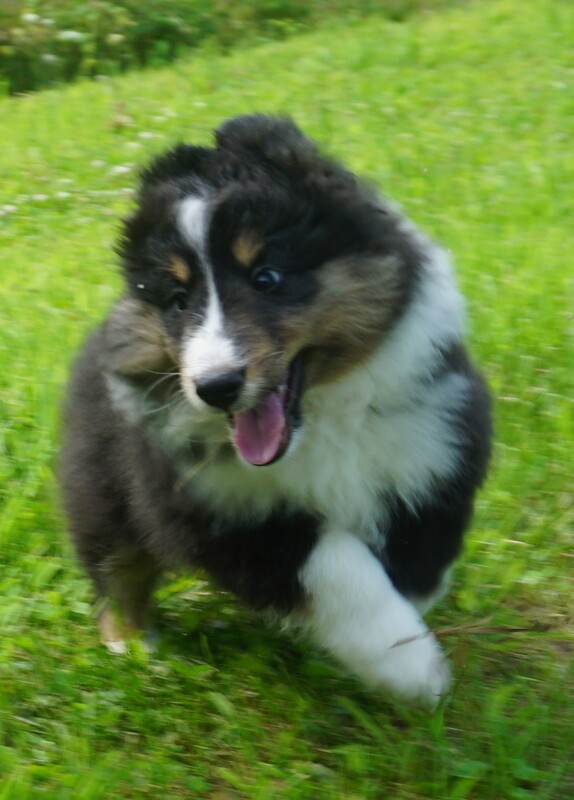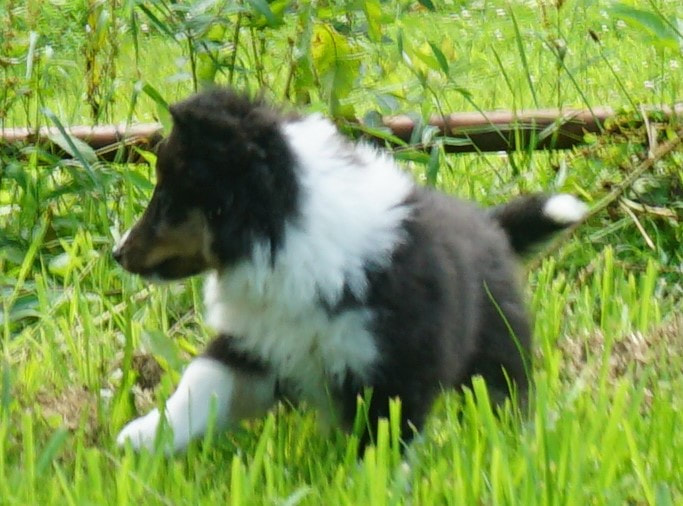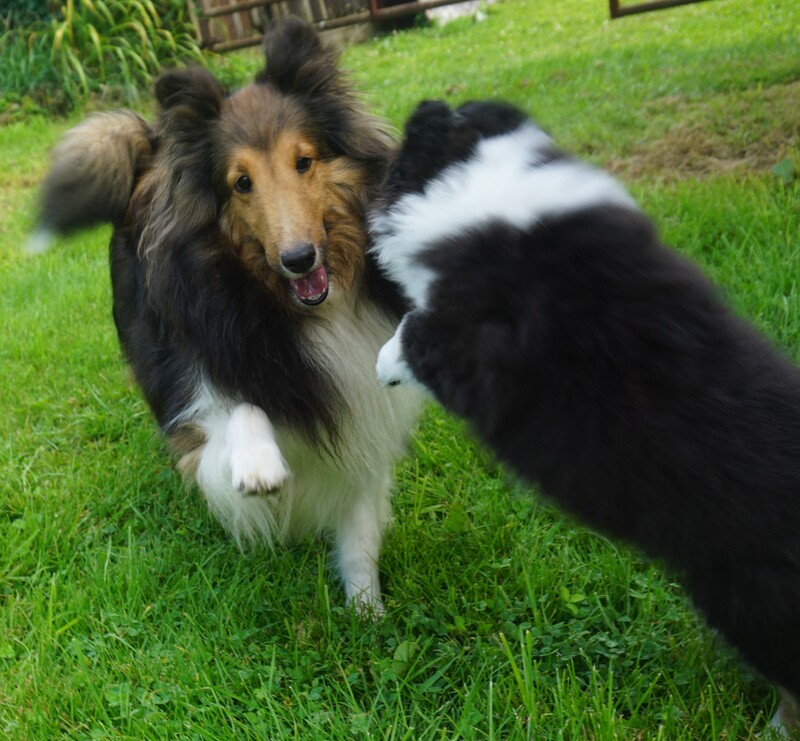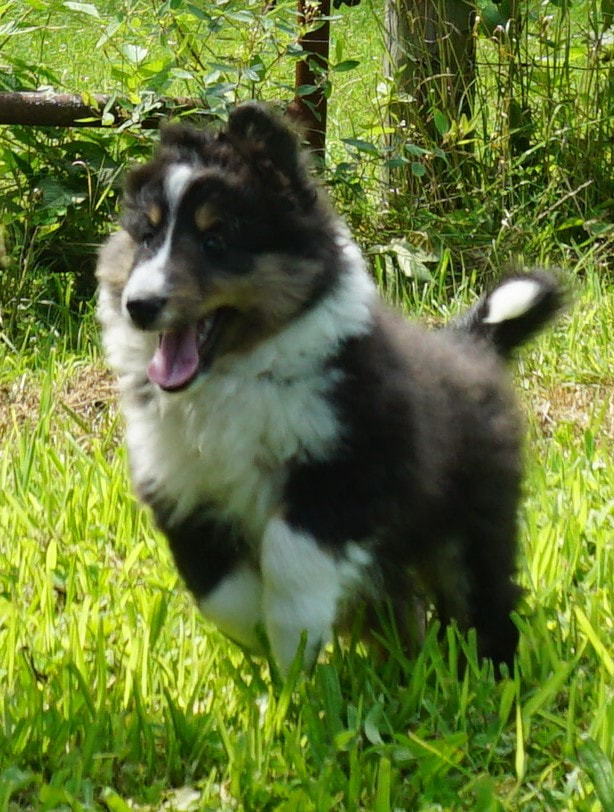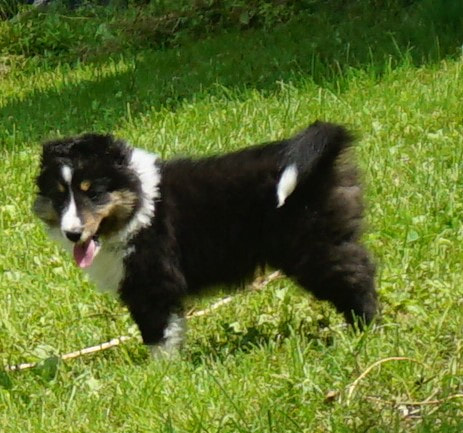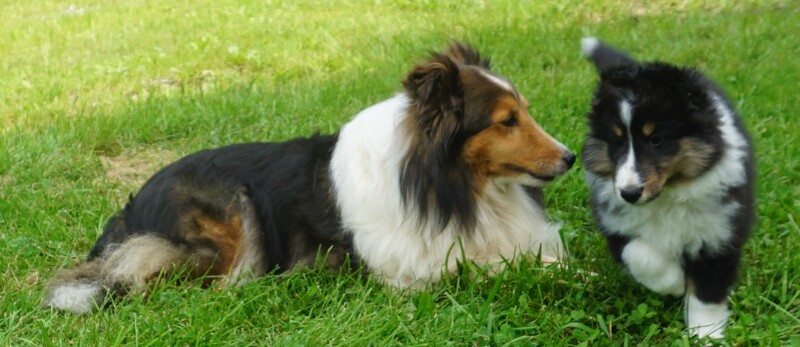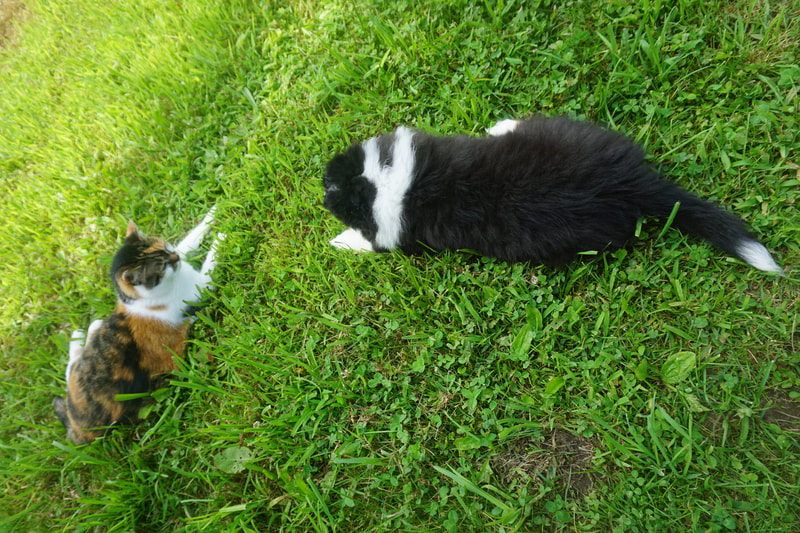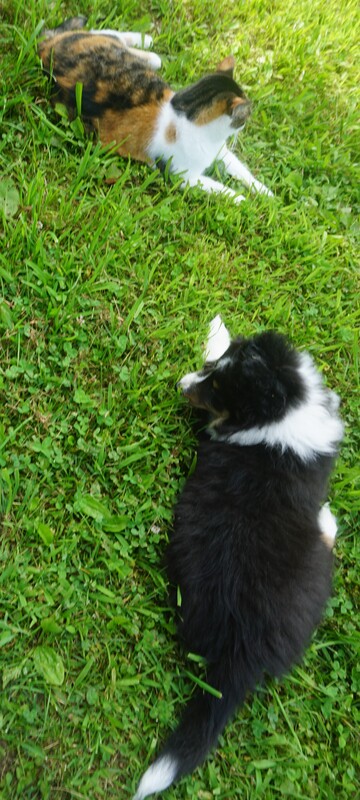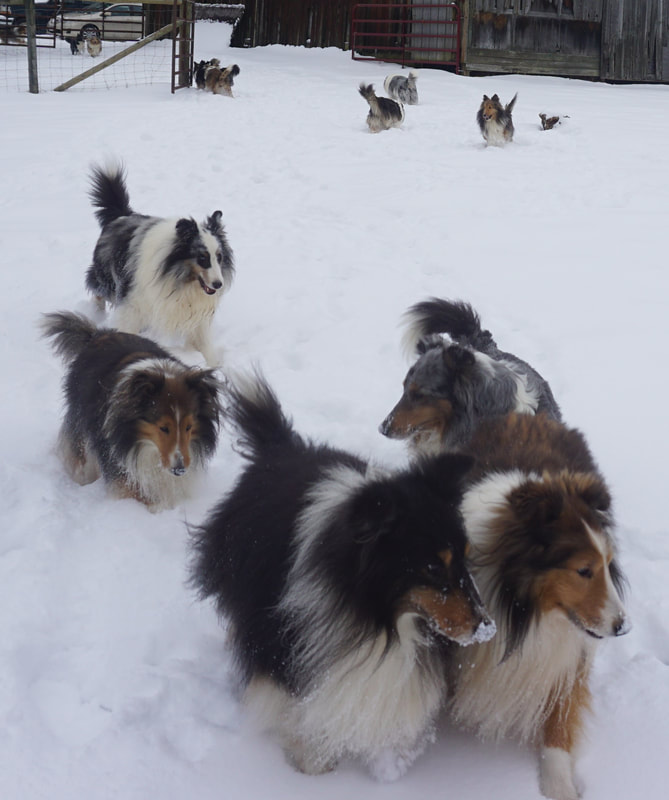Greyfyre Shelties follows all the normal health standards: Dewclaws removed at birth, quality food, clean and roomy environments, bi weekly wormings, monthly vaccinations and the temperament Rule of Sevens. They get the 5 way puppy vaccination @ 7 weeks.
There is extensive work that goes into raising quality puppies. Nearly all of it behind the 'scenes'. It starts with selecting quality breeding stock, with generations of health checks behind the genetics to determine the appropriate breeding partners. The breeder has to study bloodlines, through study of photos, observing shows and studying living examples of the bloodlines, calling owners of the ancestors and related family members. This involves years of time. Upon selecting the parents of the upcoming litter, both before and after breeding, the bitch is kept dewormed and defleaed. Currently, Advantix II is effective)
My bitches stay on Purina Pro Sport 30/20 then move to Fromm Puppy food after whelping as a base. They get soups, cottage cheese, hamburger and veggies while lactating.. During whelping, the bitch and puppies are kept on 24/7 observation, with me literally living and sleeping IN the whelping box which is a kiddie pool lined with blankets, topped with a fitted sheet and lined with pee pads that I replace as they are soiled, so mom and newborns stay in a clean environment. (Though I will leave to toilet and eat! I am after all house trained) The whelping box then changes to a 4x4 wooden box with pig rails The bitch is able to enter and leave the box at will, often choosing to lay outside the box in the cooler temperatures. Young puppies have to be kept in very warm temperatures to ensure their health. To achieve this, whelping boxes have a heating pad in the middle with a heat lamp as needed. Thus the babies entire environment is ensured. The puppies are able to crawl around the box to find their preferred temperature. A thermometer is kept in the box to ensure the temperature variations are safe and do exist. The whelping box is layered with a inch thick pad to ensure a warm base. The heavy box lays on a fuzzy top blanket so mom can't dig up blankets and accidently smother puppies. Puppies stay in this environment for a few weeks. As soon as they can lift their bellies up off the blankets I line the floor with pee pads and duct tape them together. As they can start almost walking I start to scatter timothy grass pellets over the pads. When the puppies are able to walk, I add in a rabbit pan 36x32" lined with the pee pad and pellets. When they get good at using this, I change to a 24x24" rabbit pan so they now have a little more free space. I slowly start to pull back the incontinence pads and then the blankets until they are on vinyl floor and a bed pad. When they are using the smaller pan reliably I add in a bin with pellets. By this time they are grabbing the pee pads so they are removed. When they are using the bin, I remove the rabbit pan. I slowly enlarge their play space as they grow until they have the full pen freedom to run, romp and create havoc. Already at 6 weeks they recognize new toys and immediately flock to play with them when added to the pen.
Key points are: a) Slowly make changes, don't change the set up until ALL puppies are using the litter. b) Keep the box CLEAN. Remove feces immediately, but let the urine make a 'base' that is removed daily and fresh pellets added. c) Keep area small until all pups are using the litter. d) Several litters bins spaced on each wall for quicker, easier cleaning and less 'roll your littermate in their poo'
By starting litter training early, puppies rarely eat the pellets. Orchard, Timothy grass pellets are a compressed grass horse feed and have low protein content so less likely to be eaten. Alfalfa pellets can be used, but contain more protein and more likely to be eaten. Once pups start eating formula starting at 17 days of age, they always have formula and ground kibble available that is changed out frequently. (Mom LOVES to clean their plate) Having food available 24/7 after 4 weeks of age, keeps them full and less likely to chew the pellets. This system IS labor intensive and expensive, but produces clean, healthy, content pups that house break easily with diligent follow through with their new family. Slow, gradual change of diet from mom's milk to kibble and a effective deworming program means solid stools faster.
There is extensive work that goes into raising quality puppies. Nearly all of it behind the 'scenes'. It starts with selecting quality breeding stock, with generations of health checks behind the genetics to determine the appropriate breeding partners. The breeder has to study bloodlines, through study of photos, observing shows and studying living examples of the bloodlines, calling owners of the ancestors and related family members. This involves years of time. Upon selecting the parents of the upcoming litter, both before and after breeding, the bitch is kept dewormed and defleaed. Currently, Advantix II is effective)
My bitches stay on Purina Pro Sport 30/20 then move to Fromm Puppy food after whelping as a base. They get soups, cottage cheese, hamburger and veggies while lactating.. During whelping, the bitch and puppies are kept on 24/7 observation, with me literally living and sleeping IN the whelping box which is a kiddie pool lined with blankets, topped with a fitted sheet and lined with pee pads that I replace as they are soiled, so mom and newborns stay in a clean environment. (Though I will leave to toilet and eat! I am after all house trained) The whelping box then changes to a 4x4 wooden box with pig rails The bitch is able to enter and leave the box at will, often choosing to lay outside the box in the cooler temperatures. Young puppies have to be kept in very warm temperatures to ensure their health. To achieve this, whelping boxes have a heating pad in the middle with a heat lamp as needed. Thus the babies entire environment is ensured. The puppies are able to crawl around the box to find their preferred temperature. A thermometer is kept in the box to ensure the temperature variations are safe and do exist. The whelping box is layered with a inch thick pad to ensure a warm base. The heavy box lays on a fuzzy top blanket so mom can't dig up blankets and accidently smother puppies. Puppies stay in this environment for a few weeks. As soon as they can lift their bellies up off the blankets I line the floor with pee pads and duct tape them together. As they can start almost walking I start to scatter timothy grass pellets over the pads. When the puppies are able to walk, I add in a rabbit pan 36x32" lined with the pee pad and pellets. When they get good at using this, I change to a 24x24" rabbit pan so they now have a little more free space. I slowly start to pull back the incontinence pads and then the blankets until they are on vinyl floor and a bed pad. When they are using the smaller pan reliably I add in a bin with pellets. By this time they are grabbing the pee pads so they are removed. When they are using the bin, I remove the rabbit pan. I slowly enlarge their play space as they grow until they have the full pen freedom to run, romp and create havoc. Already at 6 weeks they recognize new toys and immediately flock to play with them when added to the pen.
Key points are: a) Slowly make changes, don't change the set up until ALL puppies are using the litter. b) Keep the box CLEAN. Remove feces immediately, but let the urine make a 'base' that is removed daily and fresh pellets added. c) Keep area small until all pups are using the litter. d) Several litters bins spaced on each wall for quicker, easier cleaning and less 'roll your littermate in their poo'
By starting litter training early, puppies rarely eat the pellets. Orchard, Timothy grass pellets are a compressed grass horse feed and have low protein content so less likely to be eaten. Alfalfa pellets can be used, but contain more protein and more likely to be eaten. Once pups start eating formula starting at 17 days of age, they always have formula and ground kibble available that is changed out frequently. (Mom LOVES to clean their plate) Having food available 24/7 after 4 weeks of age, keeps them full and less likely to chew the pellets. This system IS labor intensive and expensive, but produces clean, healthy, content pups that house break easily with diligent follow through with their new family. Slow, gradual change of diet from mom's milk to kibble and a effective deworming program means solid stools faster.
My first attempts at litter training were a hoot! Over the decades the litter system evolved to my current above system which is producing 100% use of the bins for their toilet...and toy collection area! Whole area stays MUCH cleaner, poo is completely confined to the bins for quick and easy pickup.

As the puppies continue to grow, I start to move them outside to the 'outdoor' kennels
(weather permitting). Here Nanette is standing outside the 6' x 24' puppy kennel. All the kennels
are a part of the house, located downstairs within the 48'x72' building that is attached. .
The indoor/outdoor kennels are used only when I'm forced to leave the premises. They serve to keep
various dogs separated as needed during bitches heat and the like. All the kennels have a panel that looks out into the horse pastures. Barking at the horses and barn cats is a particular enjoyable pastime. Otherwise, ALL the dogs live under foot in the house with the choice to stay out in the 48'x72' building running, romping and barking or in the house with the rest of us. All have the opportunity to climb into bed with me as well. And of course, during decent weather all the dogs get out to run themselves exhausted on the surrounding 10 country acres that are fully fenced.
(weather permitting). Here Nanette is standing outside the 6' x 24' puppy kennel. All the kennels
are a part of the house, located downstairs within the 48'x72' building that is attached. .
The indoor/outdoor kennels are used only when I'm forced to leave the premises. They serve to keep
various dogs separated as needed during bitches heat and the like. All the kennels have a panel that looks out into the horse pastures. Barking at the horses and barn cats is a particular enjoyable pastime. Otherwise, ALL the dogs live under foot in the house with the choice to stay out in the 48'x72' building running, romping and barking or in the house with the rest of us. All have the opportunity to climb into bed with me as well. And of course, during decent weather all the dogs get out to run themselves exhausted on the surrounding 10 country acres that are fully fenced.
Dog crates in the house are utilized only for house training puppies or when bitches are in heat.



